Positions for First Stage of Labor
Being active during the
first stage of labor is thought to help labor progress. If you’re well
prepared and practice different postures and positions for labor during
pregnancy, you will instinctively be able to use these during
childbirth.
Many different postures and
positions can help you in the first stage, and there is evidence that
changing your position in this stage increases the effectiveness of your
contractions and reduces the pain. Assuming upright positions in
particular uses gravity to assist the descent of the baby.
Active positions
Positions that
allow you to remain active are thought to help labor progress. Some
women find rocking the pelvis backward and forward, and then rotating
the pelvis in a clockwise and then counterclockwise direction while
standing or sitting on a birthing ball, helps ease the pain. Adopting an
all-fours position on your hands and knees can help you stay focused
and also allows you to rotate your pelvis. Moving backward and forward
in a rocking chair can also be comforting. Many women find walking in
place and walking around helpful.
Supported positions
Supported positions
can be especially helpful if your baby is in an occiput-posterior
position (baby’s back to your back). Leaning forward with your hands on a
table or chair during a contraction and breathing slowly and steadily
helps you focus. If you find it comforting, your partner can massage
your shoulders and back at the same time. A lot of women find either
sitting astride on a chair facing the back of the chair or sitting on a
toilet and facing the tank with a pillow for their head and arms, a
comfortable position. This also allows you to “catnap” between
contractions.
Leaning forward onto a pile of cushions with your knees apart is a soothing and relaxing position, and can also encourage your cervix to dilate.
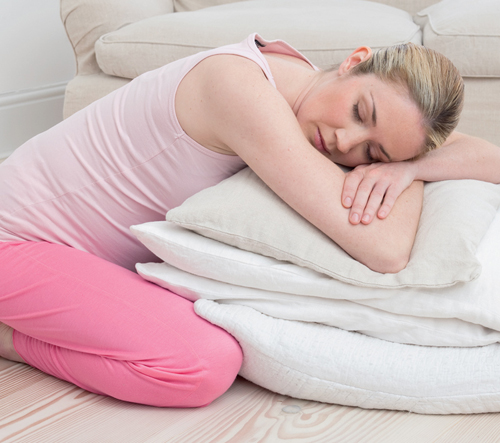
Using a birthing ball during labor enables you to adopt upright positions while feeling supported.
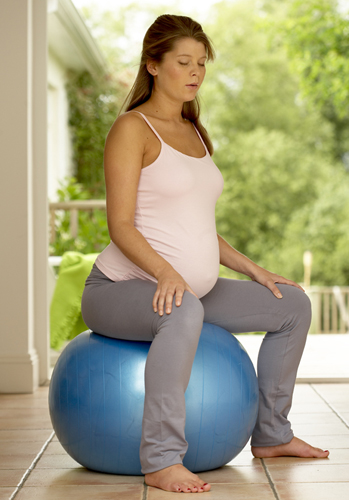
While sitting on a birthing ball, or adopting a supported
kneeling position with one, you will be able to rotate your hips to
encourage the progress of labor.
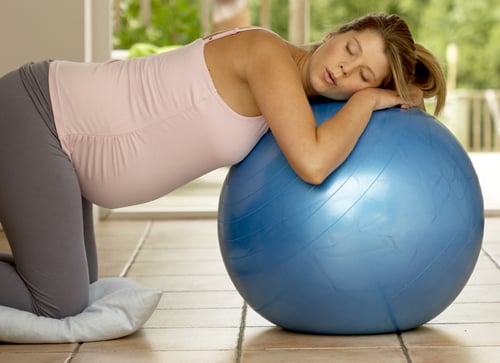
Kneeling in an all-fours position
helps take the weight off your back. This position also allows you to
move your hips back and forth or rotate them, which can be comforting
during early contractions.
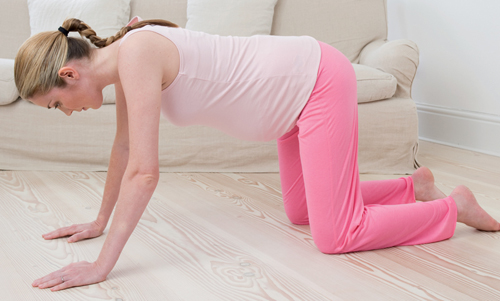
Kneeling and leaning forward onto cushions with your bottom raised also helps ease a backache and can be a helpful position to adopt during transition when you may need to resist the urge to bear down.

Sitting astride a chair can be a relaxing position because this enables you to lean forward with your legs astride while remaining supported.
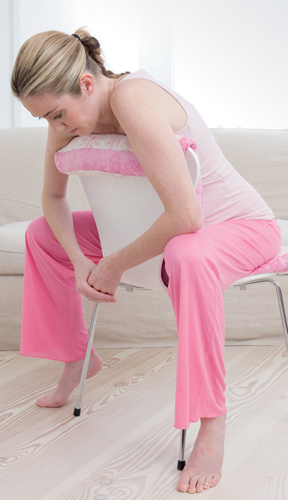
Lying on your side
with your knee bent and supported with pillows can be a relaxing
position between contractions, enabling you to rest and re-energize. You
may also want to adopt a supported lying position during some
contractions.
